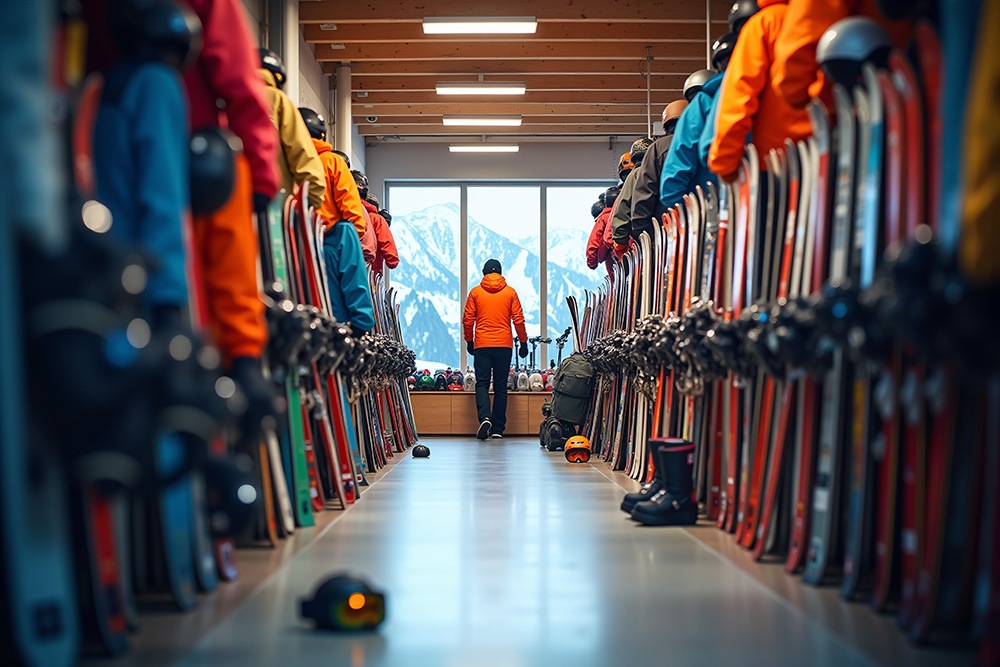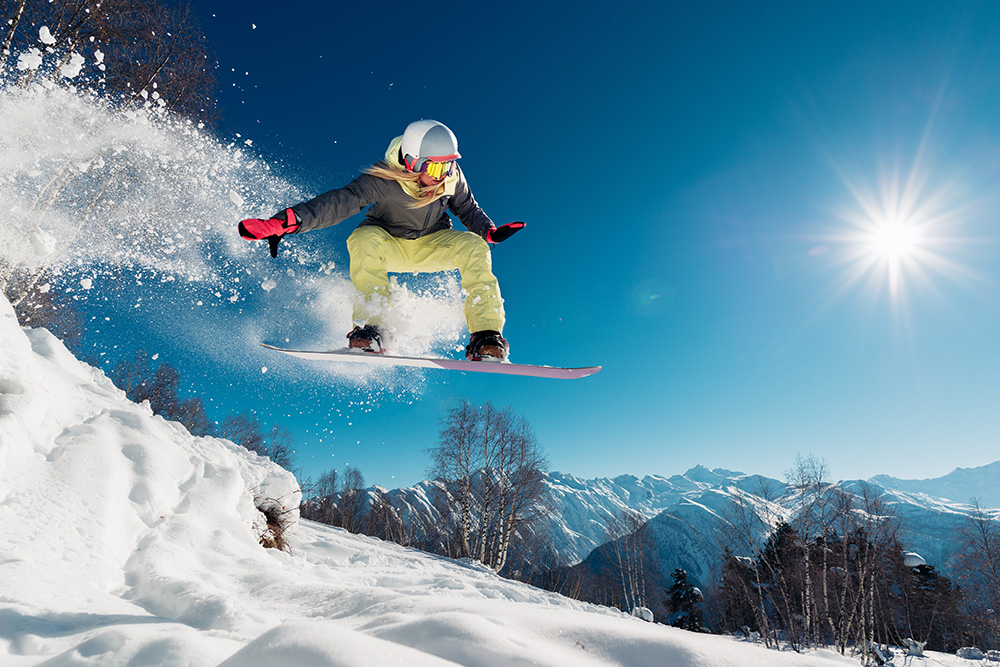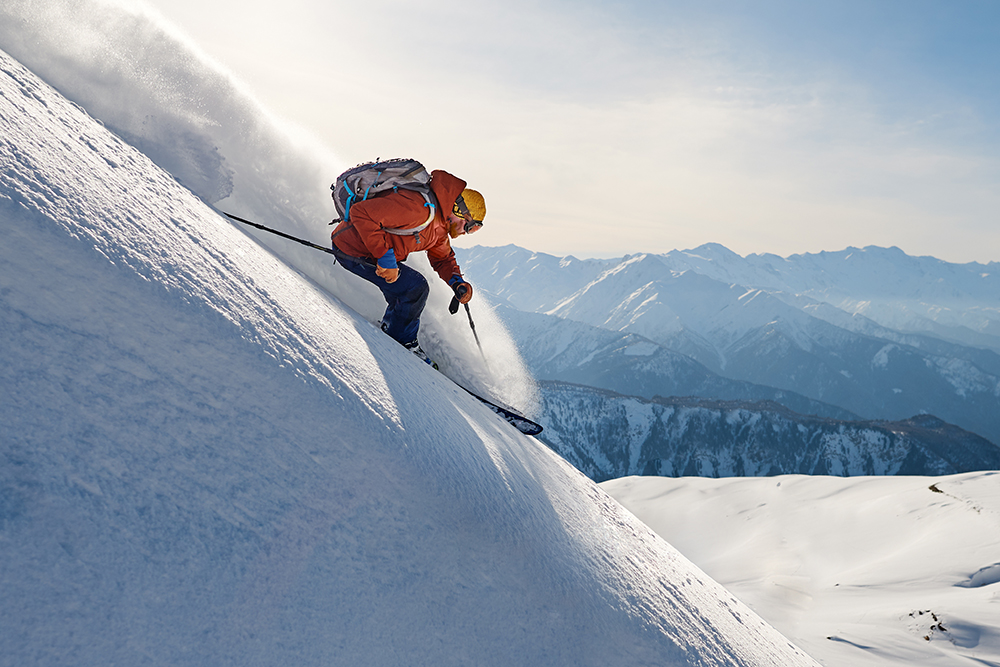How To Demo Skis
In North America, where skiing ranges from the towering Rockies to the scenic Appalachian slopes, finding the perfect skis for your local terrain is especially important. Renting demo skis not only helps you hone in on the right fit but also ensures that you’re investing in gear that maximizes your enjoyment and performance. This blog will guide you through the process of demoing skis, helping you make an informed decision for your next big adventure on the slopes.
What Does it Mean to Demo Skis?
Demoing skis means trying out a variety of ski models and styles before buying them, giving you the chance to experience firsthand how they perform. Unlike traditional rental skis, which are often geared toward beginners and recreational skiers, demo skis are typically high-performance models that represent the latest in ski technology.

The primary goal of demoing is to match skis to your specific needs, such as terrain preference, skiing ability, and goals for progression. Whether you’re an intermediate skier looking to upgrade or an expert searching for a specialized pair, demoing helps you find the perfect fit.
Another advantage of demoing is that it allows you to compare brands and designs without guesswork. Ski manufacturers create skis for a range of purposes, from all-mountain versatility to powder-focused floatation or carving precision. By testing them yourself, you can feel the subtle differences in stability, turning radius, edge grip, and flex, ensuring your final choice enhances your time on the mountain.
Where to Demo Skis
Once you’re prepared, the next step is to choose the right location for your demo session. Fortunately, North America offers plenty of options for testing skis across a variety of terrains.
Ski Resorts with Demo Days
Many ski resorts host demo days, where multiple ski manufacturers showcase their latest models. These events typically take place early in the season, giving you a chance to try out the newest gear. Resorts like Whistler Blackcomb in British Columbia, Vail and Aspen in Colorado, and Jackson Hole in Wyoming often have demo days with a large selection of skis. These events are fantastic because they allow you to test skis on the actual slopes where you’ll be skiing, providing the most accurate assessment of how the skis perform in real-world conditions.
Local Ski Shops with Demo Programs
If you can’t make it to a demo day at a resort, many ski shops offer their own demo programs. Shops like REI, Evo, and Backcountry.com have partnerships with ski brands and offer demo skis for rent throughout the season. These shops will often have a variety of models available, and their staff can help match you with skis that suit your skiing style and skill level.
On-Mountain Demo Centers
Many ski resorts also have on-mountain demo centers, which allow you to demo skis directly at the resort. These centers typically offer a selection of skis for rent, and the staff will often guide you in making an informed decision based on your preferences. On-mountain demo centers allow for a more convenient and immediate testing experience, as you can simply head to the slopes with the demo skis you choose without needing to carry your own gear up the mountain.
When selecting a location, consider factors such as the variety of skis available, the expertise of the staff, and the ability to test skis across different terrains. Resorts and shops with a wide selection of skis will give you the most diverse and comprehensive demo experience.

Tips for an Effective Demo Experience
Maximizing your ski demo session is all about preparation and focusing on the key factors that will help you make an informed decision. Here are some practical tips to ensure you get the most out of your demo experience:
Try Before You Buy
One of the main advantages of demoing skis is the opportunity to test out multiple options before committing. Even if you have a brand or model in mind, it’s wise to try different skis from various manufacturers. Different brands have their own feel, even for skis of the same category. By trying several options, you’ll gain a clearer sense of which skis truly suit your style and needs.
Be sure to test skis of varying flex, width, and purpose. For instance, if you typically ski all-mountain terrain, try both all-mountain skis and some that are designed for specialized conditions (like powder skis). You might discover a new ski style that you prefer or a design that enhances your performance on the slopes.
Note-Taking: Record Your Impressions
It’s easy to forget how each ski felt after a few runs, especially when testing multiple models. To avoid this, take notes after each run, writing down key impressions such as stability, edge grip, turn initiation, and comfort. Consider how each ski performs on different types of terrain—whether it’s smooth groomed trails, steep moguls, or fresh powder.
You might want to note how each ski feels at various speeds or whether you felt more confident with one particular ski compared to another. These notes will help you compare your experiences later and make a more informed decision once you’ve tried several options.
Terrain Variety
Ski performance can vary significantly depending on the terrain, so be sure to test the skis on different types of runs. A ski that feels great on a groomed trail might not handle moguls or deep powder as well. Aim to ski across a variety of terrain during your demo.
For example, take the skis for a run on a smooth groomer to assess edge grip and carving abilities. Then, move onto a section with some bumps or moguls to see how the skis handle uneven terrain. Finally, if available, find some off-piste or powder to test the float and stability. The more varied the terrain you test the skis on, the better understanding you’ll have of their overall performance.
Ask Questions
Don’t hesitate to engage with ski shop experts or brand representatives at the demo center. They are typically very knowledgeable about the skis they offer and can give you valuable insights based on your skill level and skiing style. Ask about the specific features of each ski model, such as its intended use, flexibility, and design.
These experts can often recommend certain skis based on the feedback you give them about your skiing ability and preferences. They may also suggest ways to fine-tune the skis for your needs, such as adjusting the bindings or changing the ski settings to suit your weight or skiing style.
Adjust Settings
Make sure the skis are properly tuned for your body and skiing style. Ski bindings should be set to your weight, skiing ability, and boot size for safety and performance. Many demo centers will have staff who can assist with binding adjustments or any necessary ski tuning.
Also, check the ski’s flex and stiffness. A softer flex is typically better for beginners or skiers who want a more forgiving, playful feel, while stiffer skis provide more precision and control for advanced skiers. Ask the staff for guidance on which ski flex will be best for your experience level and the terrain you plan to ski on.
Pacing Yourself
Demoing skis can be physically demanding, especially if you’re trying out multiple models in one day. Avoid the temptation to rush through your demo and try too many skis at once. Skiing fatigued can make it difficult to assess the skis objectively.
Take your time between runs, rest if needed, and focus on testing just a few skis at a time. This approach will help you avoid making hasty decisions and ensure that you give each pair of skis a fair trial.
By following these tips, you can ensure that your ski demo experience is productive, enjoyable, and ultimately helps you select the right pair of skis for your skiing style and goals.

Common Mistakes to Avoid
Demoing skis can be an exciting and informative experience, but it’s easy to make some common mistakes that could lead to a less-than-optimal selection process. Here are some pitfalls to avoid to ensure you choose the right skis for your needs:
Trying Too Many Skis in One Day
One of the most common mistakes is attempting to test too many skis in one day. While it may seem like a good idea to try as many skis as possible, this can overwhelm you and make it difficult to remember how each pair felt. Trying too many skis can also lead to fatigue, which will affect your ability to assess their performance objectively. Limit the number of skis you test per day and focus on a few models that align with your preferences.
Ignoring Expert Advice
Don’t disregard the expertise of the demo center staff or brand representatives. These professionals can offer valuable insights into which skis will suit your skill level and skiing style best. They can also adjust bindings or fine-tune skis for you. While it’s important to trust your own instincts during the demo, make sure to ask questions and listen to advice from those who know the products well.
Forgetting to Test in Your Typical Conditions
It’s easy to get caught up in the excitement of demoing skis, but don’t forget to test them in conditions that match your typical skiing terrain. If you mostly ski on groomed runs, test the skis on smooth, well-maintained trails. If you prefer powder or backcountry skiing, make sure to demo skis in those conditions as well. Testing skis outside of your usual environment can give you a false impression of their performance, so prioritize terrain that mirrors your usual skiing experiences.
Rushing the Process
Demoing skis should be a thoughtful, deliberate process. Rushing through the selection process in order to finish quickly can lead to making an impulsive decision. Give yourself enough time to assess how each ski performs and how it feels across different types of terrain. Take breaks, reflect on your impressions, and ask for expert advice before making your final choice.